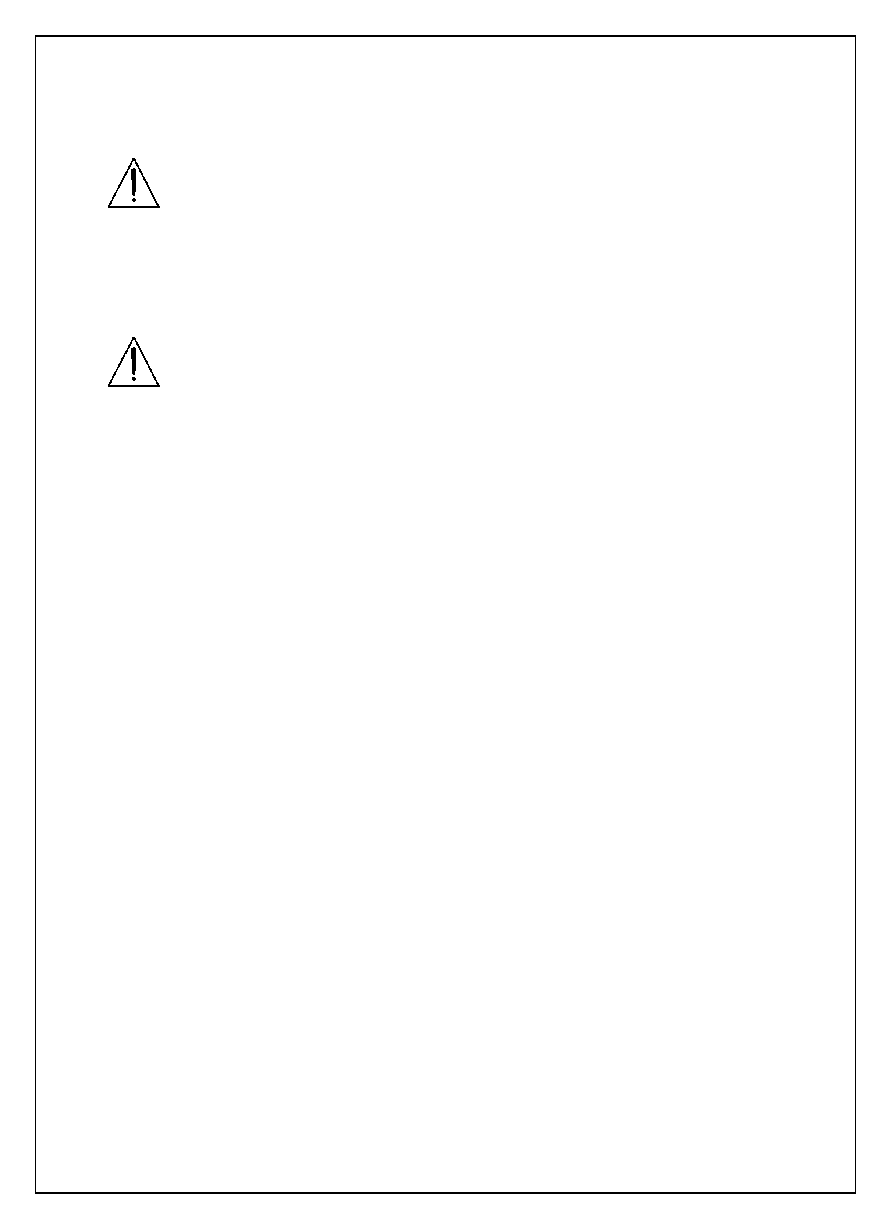- 您現(xiàn)在的位置:買賣IC網(wǎng) > PDF目錄24796 > 07-AP863 THERMAL PRINTER PORTABLE PDF資料下載
參數(shù)資料
| 型號: | 07-AP863 |
| 英文描述: | THERMAL PRINTER PORTABLE |
| 中文描述: | 便攜式熱敏打印機(jī) |
| 文件頁數(shù): | 10/14頁 |
| 文件大小: | 96K |
| 代理商: | 07-AP863 |

Ap863 Users’ Guide Page 5 of 14
CAUTION: Take care not to damage the exposed metal contacts within the printer while changing the
power pack. Do not touch these metal contacts, or the gold contacts on the power pack, as this may
impair operation.
3.3
BATTERY PACK HANDLING PRECAUTIONS
WARNING! Battery Handling Precautions
The battery contacts are recessed, and the pack is fitted with an internal safety fuse, but the
user must take care to avoid short-circuiting the contacts, by preventing them from touching
any metallic object. For example, the battery pack should never be carried loose in a pocket where it
could rub against coins, keys or other metallic objects.
Short-circuiting the contacts of the battery pack will cause a heavy current to flow, which may lead to
excessive heating of the battery pack or any metallic objects connected to it. This could cause burns,
or start a fire.
WARNING! Do Not Try To Open The Battery Pack
The standard battery pack contains five Nickel-Cadmium Cells. Cadmium is a potentially
toxic heavy metal, and exposing the cells increases the risk of leakage or short-circuiting.
CAUTION: It is strongly recommended that the external charger is disconnected whenever the battery
pack is removed or replaced.
3.4
BATTERY PACK ENVIRONMENTAL CONCERNS
Please observe local standards for the handling, transport and disposal of Nickel-Cadmium Cells.
Regulations prohibit the disposal of Nickel-Cadmium Cells in certain countries. Complete battery
packs may be returned, at the user’s risk and expense, to Able Systems for ecological recycling.
Consult the factory for details.
3.5
BATTERY PACK TYPES AND CAPACITY
Two types of battery pack are currently available for use with the Ap863. These are:
950 mAH NiCd
(ASL Product Code AP800BP-01)
1300 mAH NiMH
(ASL Product Code AP800-MHBP)
The capacity of a fully charged NiCd pack will normally be sufficient to print normal text along about
two full rolls of paper. However, the amount of printing which can be achieved depends greatly on the
printing density, idle time and other factors such as the ambient temperature and the history of the
battery pack. The NiMH pack capacity may be found to be greater in some applications, but the
lifetime will normally be shorter.
With the printer awake but idle, a fully charged battery would last for up to 10 hours, but the built-in
sleep mode shuts down the printer completely, reducing energy consumption to a negligible rate.
In the event of the battery becoming exhausted, the printer will automatically protect its own control
circuitry by entering sleep mode if the instantaneous battery voltage drops below a threshold (e.g.
during a particularly heavy section of print). In this case data stored in the buffer is lost.
3.6
BATTERY PACK RECHARGING
The battery pack can be recharged while installed in the Ap863. A flat battery can normally be
completely recharged in about 15 hours at the normal rate. (See section ‘7.3 Battery Charger
Details’). If it is not convenient to recharge the pack within the printer, it may be exchanged for a fully-
charged pack (see section ‘3.2 Removing and Replacing the Power Pack’). The discharged pack can
then be recharged in the printer at another time. A separate charging unit will be available, so that
multiple packs can be recharged while the printer remains in use.
The battery pack should be capable of between 500 and 1000 complete charge and discharge cycles,
though this may be reduced in very repetitive applications. If a particular battery pack appears not to
be holding charge as well as expected, it may be worn out and should be replaced by a new one.
Please consult the factory for further details and recommended battery treatment.
相關(guān)PDF資料 |
PDF描述 |
|---|---|
| 07-AP890 | IMPACT PRINTER PORTABLE |
| 07-AP892 | IMPACT PRINTER PORTABLE |
| 935245640118 | HCT SERIES, 1-INPUT INVERT GATE, PDSO5 |
| 935245640165 | HCT SERIES, 1-INPUT INVERT GATE, PDSO5 |
| 935245650125 | HC/UH SERIES, 1-INPUT INVERT GATE, PDSO5 |
相關(guān)代理商/技術(shù)參數(shù) |
參數(shù)描述 |
|---|---|
| 07-AP892 | 制造商:ABLE SYSTEMS 功能描述:PRINTER IMPACT PORTABLE 制造商:ABLE SYSTEMS 功能描述:PRINTER, IMPACT PORTABLE |
| 07B003-000 | 功能描述:RPC-7 50OHM MICROWAVE BEAD 制造商:rosenberger north america 系列:- 零件狀態(tài):在售 連接器樣式:RPC-7 配件類型:磁珠 配套使用產(chǎn)品/相關(guān)產(chǎn)品:RPC-7 連接器 基體材料:黃銅 基體表面:金 特性:- 顏色:金色 中心觸頭材料:金 中心觸頭表面:金 標(biāo)準(zhǔn)包裝:100 |
| 07B1003JF | 制造商:Vishay Dale 功能描述:THERM NTC 100K OHM 5% 26 AWG RAD |
| 07B2003JF | 制造商:Vishay Dale 功能描述:THERM NTC 200K OHM 5% 26 AWG RAD |
| 07B5002JF | 制造商:Vishay Dale 功能描述:THERM NTC 50K OHM 5% 26 AWG RAD |
發(fā)布緊急采購,3分鐘左右您將得到回復(fù)。